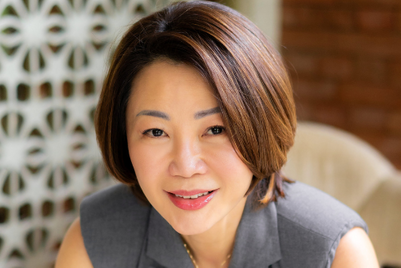.jpg&h=570&w=855&q=100&v=20250320&c=1)
There's no regional aspect to healthcare marketing; it's highly country-specific. Whether pharmaceutical giants, medical device manufacturers, consumer health brands or medtech startups, each company and brand must identify its priority markets based on many factors.
But the work does not end there. Before the messaging can begin, the shape of the local healthcare system should be considered, including GDP, how consumers approach the healthcare system, an ageing population, cultural norms, and what the insurance situation looks like. It must all be considered.
In all these aspects, Intel reassures brands that they are targeting the right markets and that the healthcare innovations introduced align with the needs and preferences of the in-market system, its insurers, and its consumers.
And then there are the therapies or interventions themselves. Pharma companies tend to look for markets with critical mass. If the number of potential patients in a market is low, there's little point in big pharma targeting a launch there.
But it isn't just volume. In healthcare, there are other dynamics at play. Is the disease screened for? Do people know the symptoms to look for? How long do patients take to get a correct diagnosis? Is there a clear treatment pathway? Which specialists are involved in the patient's care? Where, within the treatment pathway, might the new drug or intervention fit?
This points to a hugely dynamic healthcare market in a region like APAC. Yet, APAC markets are often low on the priority list for global healthcare company market entry, which means that healthcare innovation can come slowly to the region. The standard approach is for brands to launch in the US, then Europe, before APAC. That delays the arrival of innovation in APAC by anywhere between two and five years.
But all this is changing. Alongside Europe, China, Japan and Korea are increasingly valuable healthcare markets—and brands are taking notice.
Diverse markets, diverse needs
Changing things up is vital from the clinical trials perspective, too. It's no secret that Asian populations have been hugely underrepresented—historically—in international clinical trials.
And specific markets have apparent characteristics. For example, the Japanese healthcare system is adapting to care for increasing numbers of nonagenarians and centenarians. This suggests that ageing is top of mind across many of the developed nations in the region.
Then, there is the shift towards precision therapeutics in cancer care. As we increasingly rely on biomarkers for diagnosing and tailoring treatment plans for cancer patients, the genetic profiling of specific populations becomes vital. Generic concepts of populations are no longer adequate.
And every nation has its problems with unhealthy habits. In the West, there is a battle between sugar and fat. In APAC cultures, reliance on rice poses a challenge. Again, being generic does not work.
Then, there is the global move towards sustainability. In APAC healthcare, this is not about climate and nature; it has much more to do with resilience, reach, and equity. When 'sustainability' is mentioned, APAC populations tend to associate it with improved funding, better preparation for the next crisis and improved access—especially for marginalised populations.
Sustainable healthcare is also about last-mile medicine delivery, especially in countries like India, Indonesia and the Philippines. Launching medicine in an urban environment is one thing, but getting it to rural communities is quite another. Levelling up healthcare is a huge challenge.
The impact of marketing and communications
Two exciting trends are impacting the healthcare communications, making it more challenging to land the right message to the right target audience(s) at the right time.
Firstly, we are in the age of precision medicine, with multiple drug combinations and niche indications. This means generic messaging across populations, genders, and age groups will no longer be possible. Where a drug may have previously been suitable for a large, diverse patient population, today, each drug or combination of drugs may be only ideal for a small subset of patients at a specific stage of their disease.
This means that when brands communicate—whether it be to doctors, patients, or the public – they must be specific about who the drug is for and what effect it's likely to have on individuals.
Secondly, many consumer brands realise how extensively the public—especially GenZ—cares about health and wellness. Whether it's breakfast cereal, toothpaste, face cream or hand sanitiser, consumers are seeking products that offer health benefits.
In response, brands align themselves with this need and tailor their communications accordingly. The Covid pandemic also vaulted healthcare discussions into the public domain—something we have never seen before. Consequently, the medical and consumer health worlds collide, resulting in a lot of noise that is increasingly difficult to cut through.
That is why it is vital for brands—working with agency partners—to understand what messaging will resonate, work out what might change behaviour, and know how to articulate the significance ('so what') of new data, scientific concepts, or new approaches. This, in turn, relies on varied expertise.
Having specialists within the healthcare communications team who can comprehend the data and understand what it means for different stakeholders enables pharma companies, medical device companies, and physician and patient organisations to communicate effectively with professional, patient and public audiences and address crucial healthcare issues such as disease and symptom awareness, risk factors, diagnostic criteria and new treatment approaches.
Glen Halliwell is the global head of medical communications at GCI Health.




.jpg&h=334&w=500&q=100&v=20250320&c=1)


.jpg&h=334&w=500&q=100&v=20250320&c=1)




+(900+x+600+px)+(3).png&h=334&w=500&q=100&v=20250320&c=1)




.png&h=268&w=401&q=100&v=20250320&c=1)

.jpg&h=268&w=401&q=100&v=20250320&c=1)
